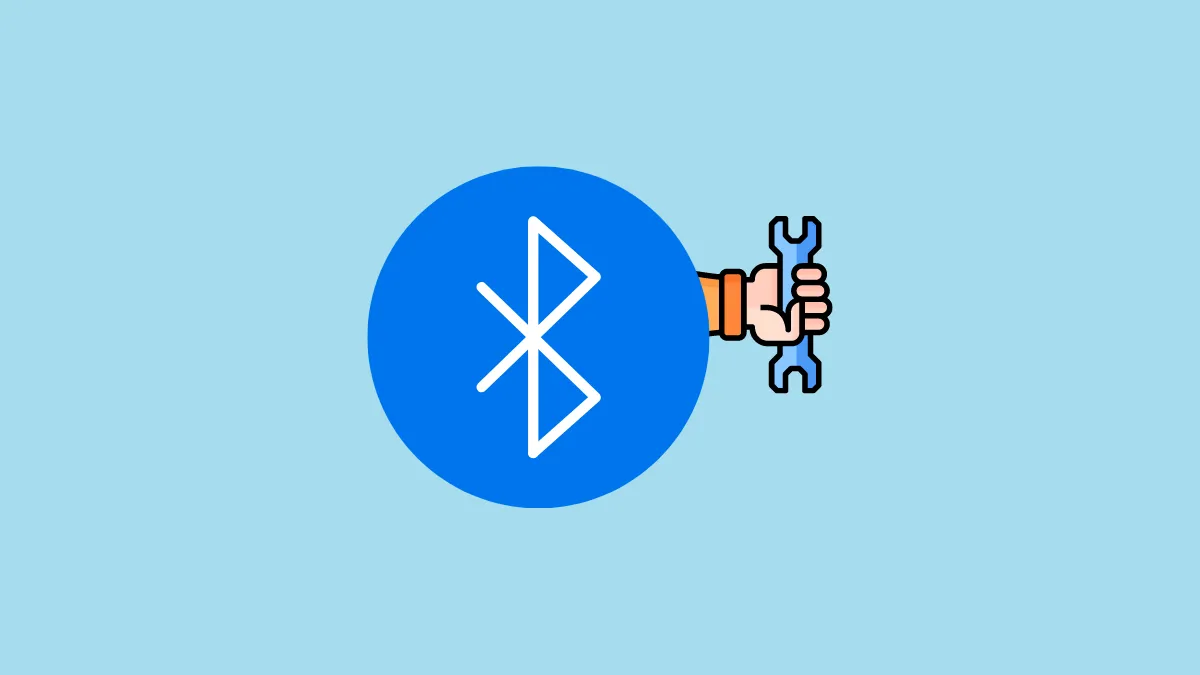- If your Bluetooth device is not visible, you should first check that it is not hidden.
- In case you are using an external Bluetooth dongle, check that it does not have a problem by connecting it to another USB port or PC.
- Turning off airplane mode, running the hardware troubleshooter, restarting the Bluetooth service, and reinstalling the device driver are other fixes you can try.
- You may need to reset your PC to its default settings if other solutions do not work.
Fix 1: Ensure your Bluetooth device is not hidden
Your Bluetooth device may not be missing from your PC, but it may be inaccessible if it is hidden.
- Right-click on the Start button and click on 'Device Manager'.

- When the Device Manager opens, click on the 'View' menu at the top and then click on 'Show hidden devices'.
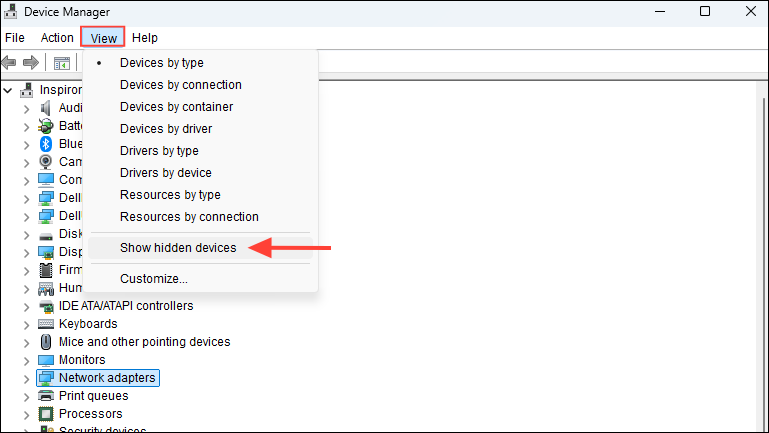
- Then click on Bluetooth and expand it to view all Bluetooth devices. Check and see whether your missing Bluetooth device is listed there.

Fix 2: Reconnect your Bluetooth adapter
If you're using an external Bluetooth dongle, there may be an issue with your Bluetooth adapter, preventing your Bluetooth devices from showing up. Remove the adapter and reconnect it to see if your Bluetooth devices become visible. In case that doesn't work, try connecting the dongle to another USB port.
In case you have another computer, connect your Bluetooth dongle to it and check whether it is working correctly. If it isn't, you may need to replace it.
Fix 3: Perform a power flush
Residual static charge, which remains even after you turn off your PC is another factor that can affect Bluetooth devices. You can perform a power flush to get rid of it. To do so, remove the battery from your computer and press and hold the power button for around 20 seconds. Once the static charge is dissipated, put the battery back in and turn on your PC. Then check whether your Bluetooth device is visible.
Fix 4: Turn off Airplane Mode
If you turn on Flight Mode or Airplane Mode on your device, wireless connections like Wi-Fi, cellular networks, NFC, and Bluetooth get turned off. So, make sure Airplane Mode is not enabled by default. In case it isn't, turn it off and then turn it off again from the Action Center.
- Click on the battery, Wi-Fi, or volume icon on the right side of the taskbar to launch the Action Center.
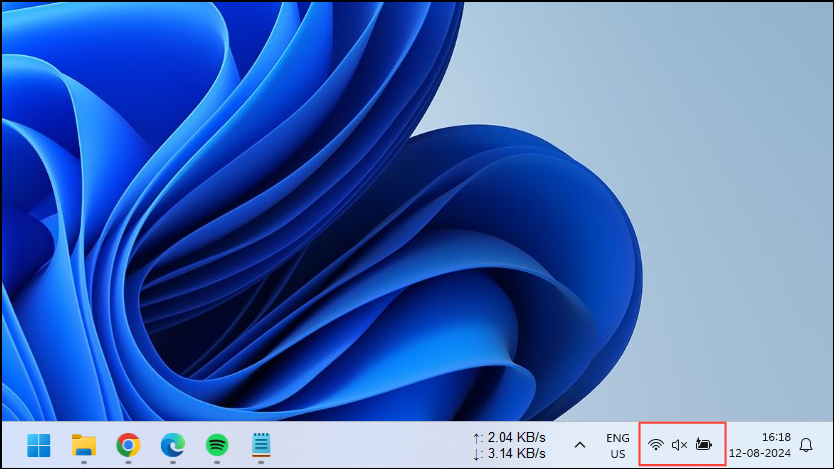
- When the Action Center opens, click on the Airplane Mode icon to turn it on for a few seconds and then off.
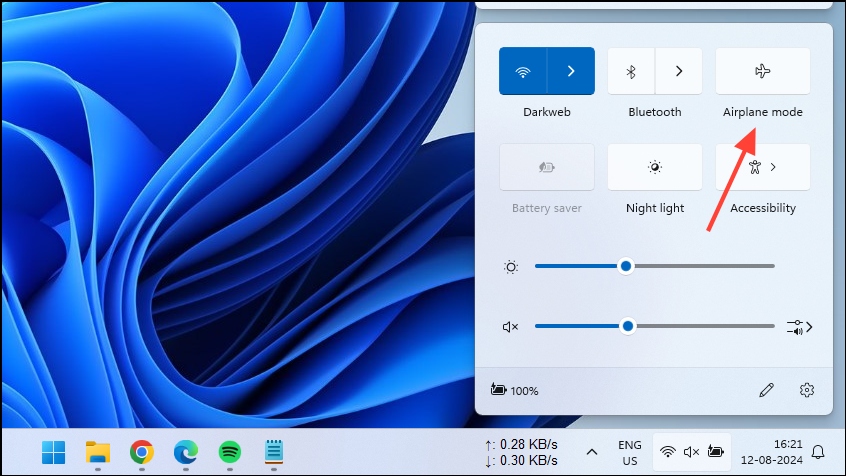
Fix 5: Run the Hardware and Devices troubleshooter
The Hardware and Devices troubleshooter can help detect problems with your device's Bluetooth.
- Open the Run dialog box with the
Win + Rshortcut and then typemsdt.exe -id DeviceDiagnosticbefore pressing the Enter key.
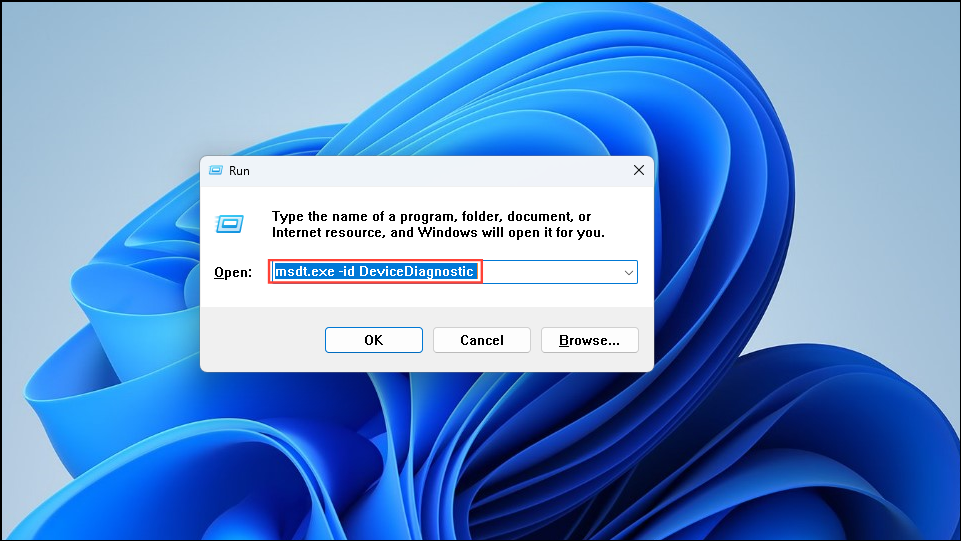
- When the Hardware and Device troubleshooter launches, click on the 'Next' button.
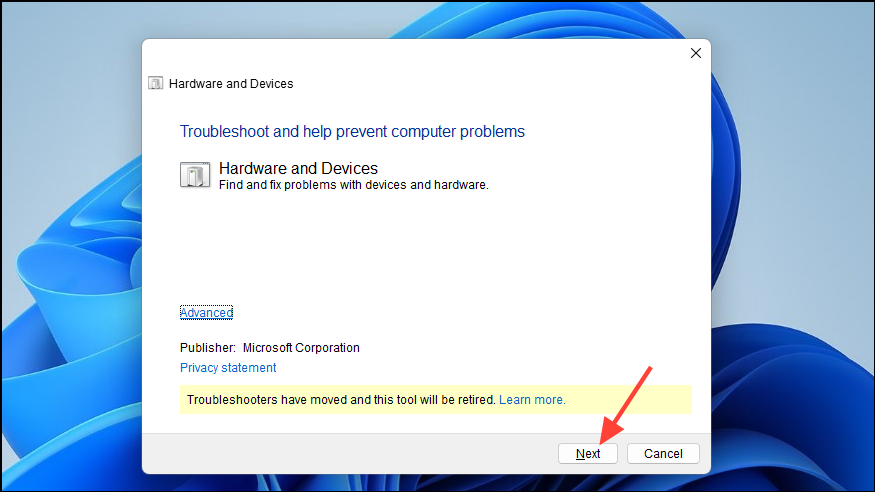
- Wait until the troubleshooter completes its scan. You can then click on 'Apply this fix' and restart your PC.
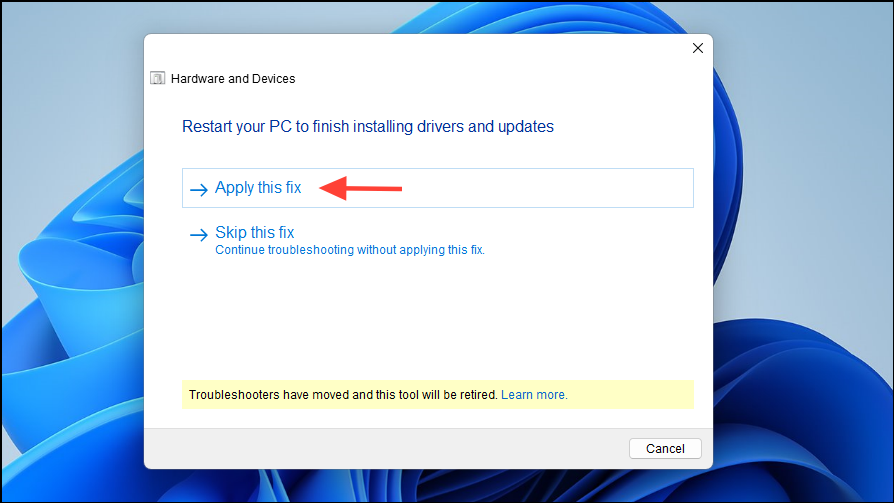
Fix 6: Scan for hardware changes
If the Device Manager does not show your Bluetooth device, you may need to manually scan for hardware changes. Windows will then search for any devices you have connected.
- Open the 'Device Manager' and then click on the name of your PC at the top.
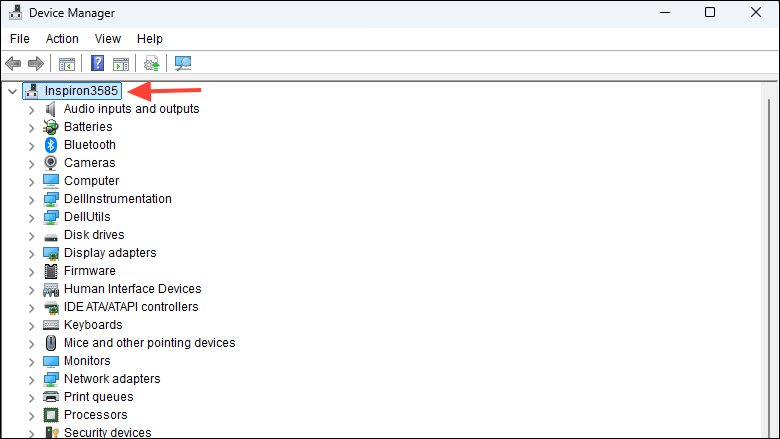
- Then, click on the 'Action' menu at the top and then on 'Scan for hardware changes'.

Fix 7: Restart the Bluetooth service
Try restarting the Bluetooth service and check if your Bluetooth device becomes visible.
- Open the Start menu, type
services.mscand press Enter, or click on the Services utility.
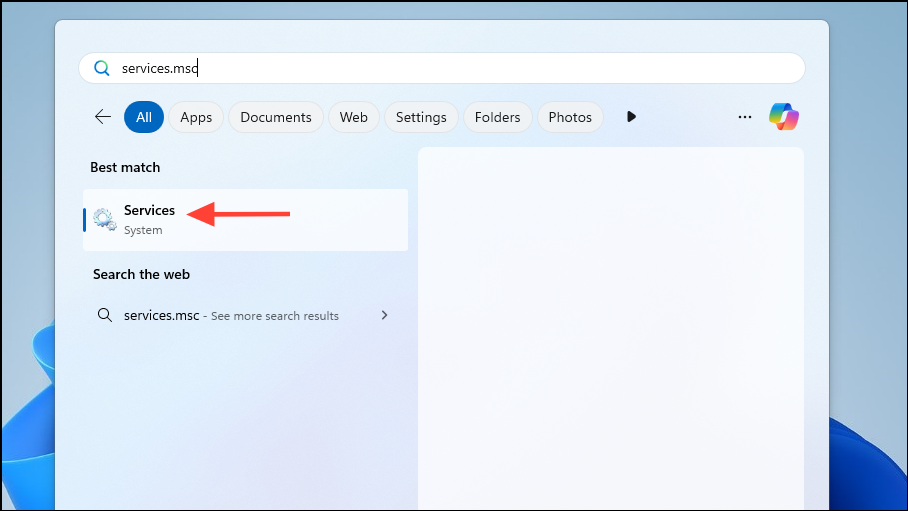
- Find the 'Bluetooth Support Service' option and right-click on it before clicking on 'Restart'. If the Restart option is unavailable, click on 'Stop' and then 'Start'.

- After restarting the service, right-click on it and click on 'Properties'.
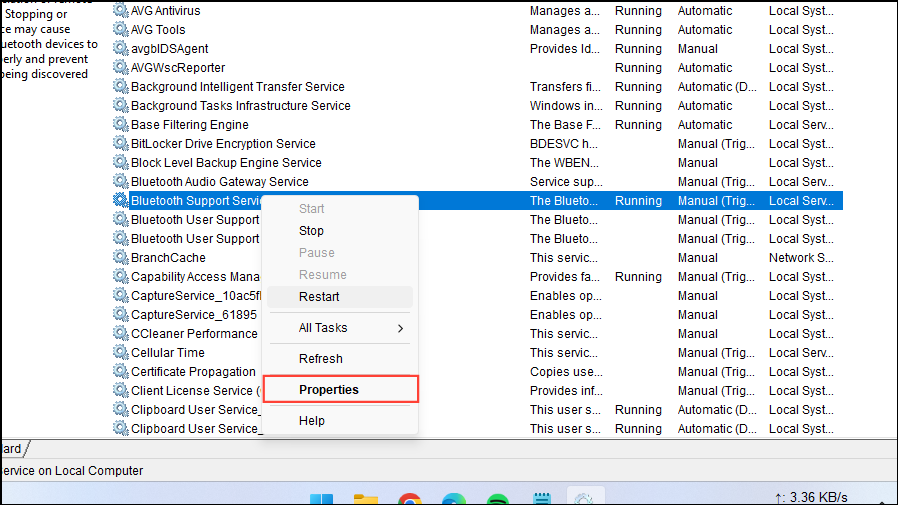
- When the Properties dialog box opens up, click on the 'Startup Type' dropdown menu and select 'Automatic'. Then click on the 'OK' button before rebooting your PC and checking for your missing Bluetooth device.
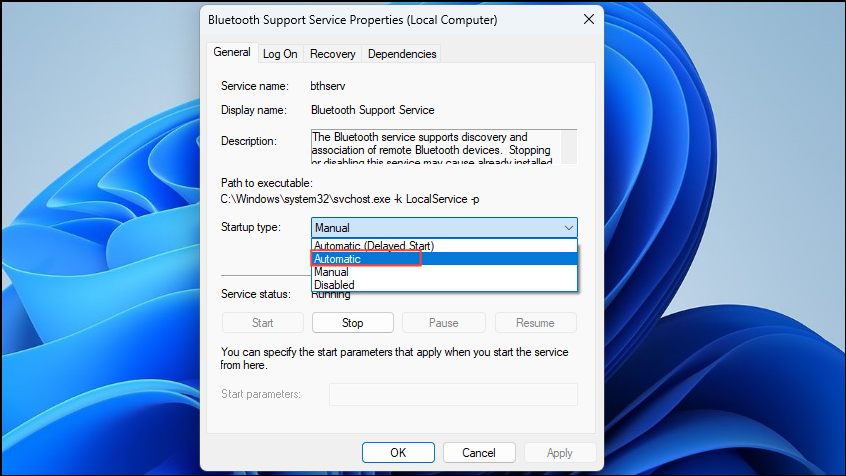
Fix 8: Reinstall the Bluetooth driver manually
If your Bluetooth driver is not configured properly, your PC may fail to detect the device. In such cases, you will need to manually reinstall the Bluetooth driver.
- Open the Device Manager and click on your PC name at the top of the list of devices to select it.
- Then click on the 'Action' menu at the top before clicking on 'Add Legacy Hardware'.

- When the installer wizard appears, click on the 'Next' button.
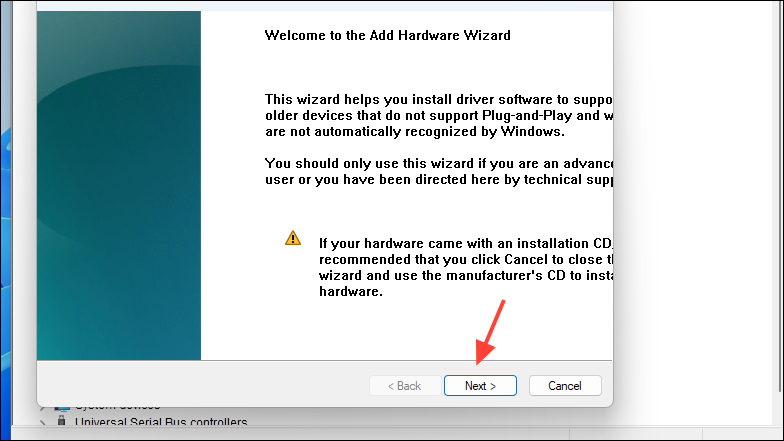
- On the next page, click on the 'Install the hardware that I manually select from a list' option and then on the 'Next' button.

- In the list of devices, look for Bluetooth. If it is not available, click on 'Network Adapter' and then on the 'Next' button.
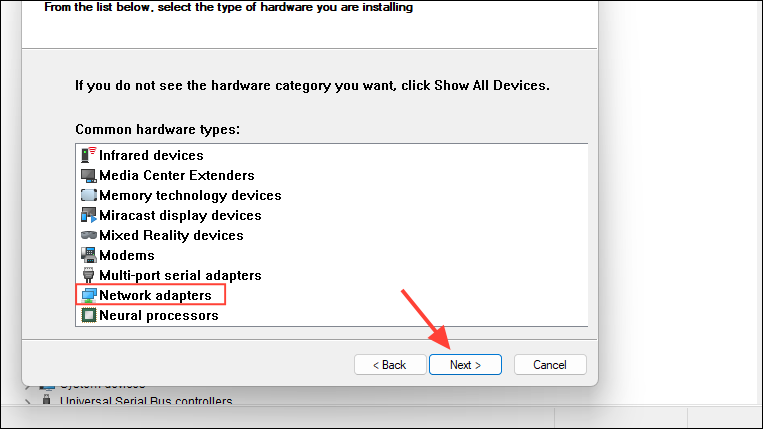
- On the next page, select the manufacturer of your device on the left side and the device on the right. Then click on Next.
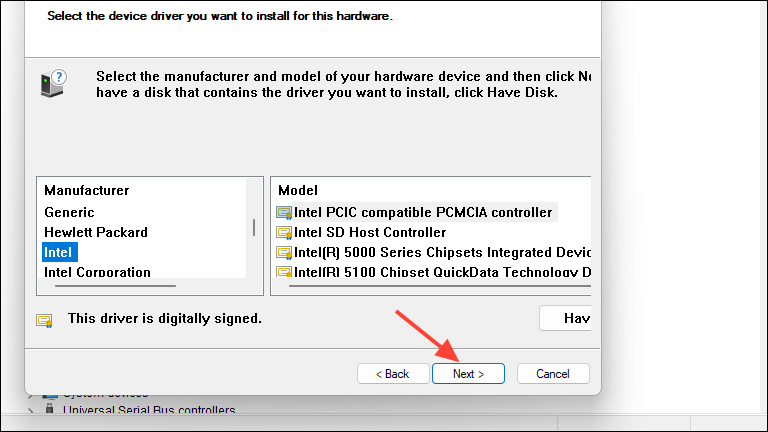
- Wait for the driver to be installed and then restart your computer before checking for the Bluetooth device.
Fix 9: Reinstall USB drivers
Corrupted, incompatible, or outdated USB drivers can prevent your Bluetooth device from showing up. To fix this, you may have to reinstall the USB drivers.
- Open the Device Manager and click on the 'Universal Serial Bus Controllers' to expand the category.
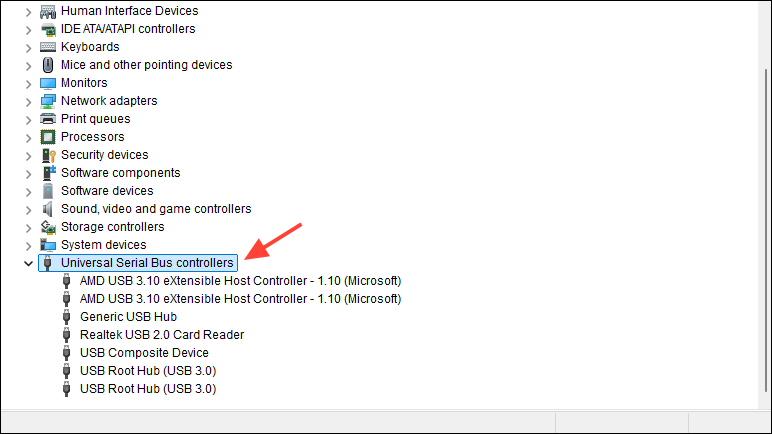
- Right-click on a USB device and then click on 'Uninstall Device'. Once the device is removed, reboot your computer.
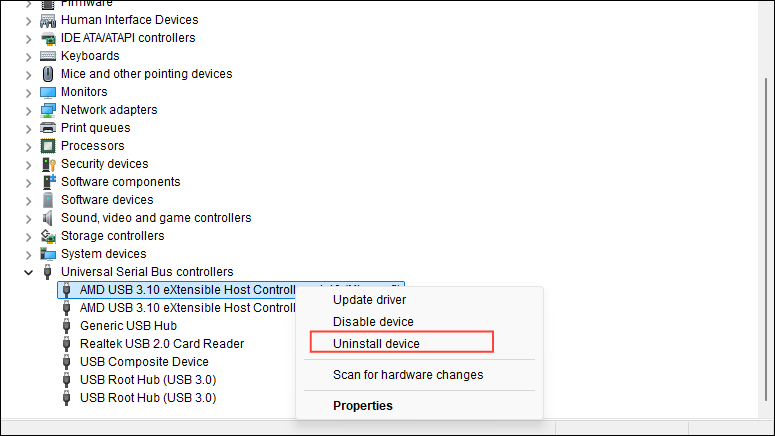
- After your PC restarts, open the Device Manager, select your PC at the top, and click on the Action menu and then on 'Scan for hardware changes'. Then you can reinstall the USB device by following the steps provided above.
Fix 10: Run SFC and DISM scans
SFC and DISM scans can help you identify problems with your system and fix them.
- Open the Start menu, type
cmd, and click on 'Run as administrator'.
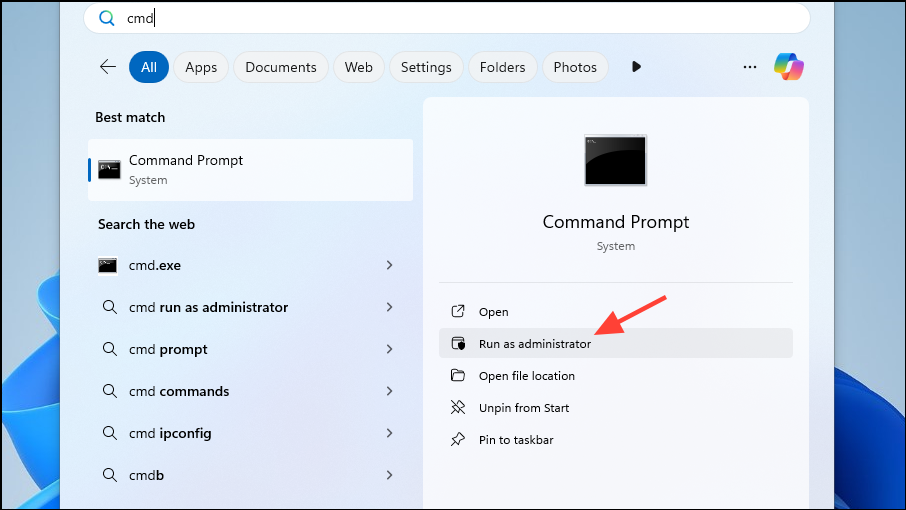
- When the command prompt window opens, type
sfc /scannowand press Enter.
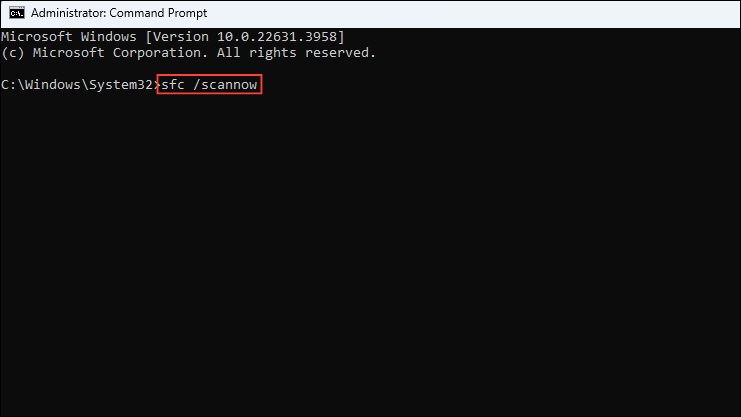
- The scan can take some time to finish, so wait for it to complete. Then type
DISM.exe /Online /Cleanup-image /Restorehealthand press Enter again.
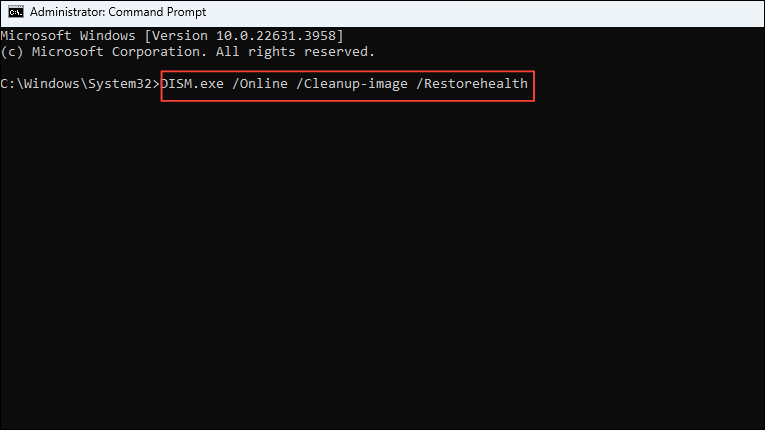
Fix 11: Boot into Safe Mode
You can try booting into Safe Mode, which only enables the drivers and utilities needed for running the machine while disabling all other programs.
- Press and hold the Shift key and then restart your PC.
- When your computer reboots, you will see the Advanced Options screen. Click on 'Advanced Options' and then on 'Troubleshoot'.
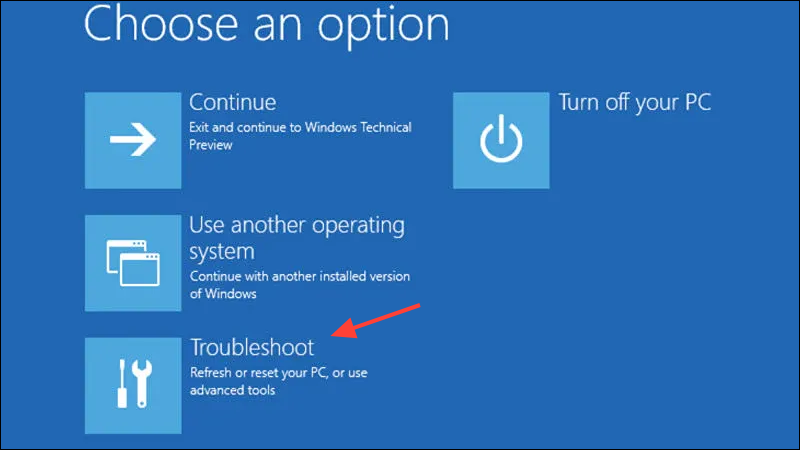
- Next, click on 'Advanced Options' and then on 'Startup Settings'.

- Press
4on your keyboard to restart your PC and enter the Safe Mode.

- Once you've booted your PC into Safe Mode, you can try to identify what is preventing your Bluetooth device from showing up.
Fix 12: Reset your PC
If you cannot see your Bluetooth device even after trying out other solutions, you may need to reset your computer. Keep in mind this will remove all your settings and customizations and revert your PC to its default state.
- Open the Start menu, type
reset, and click on 'Reset this PC'.
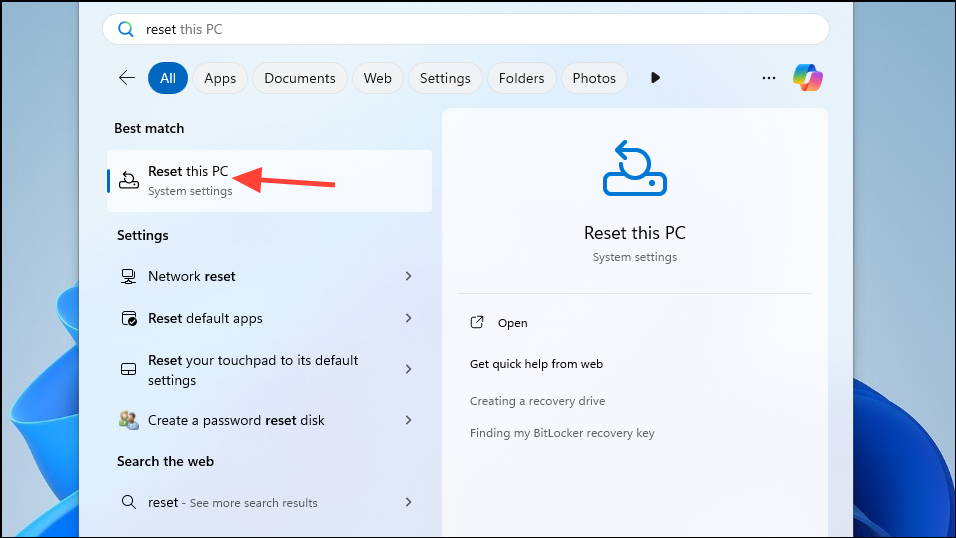
- When the Recovery page opens, click on the 'Reset this PC' button.

- You can choose whether to keep your files or remove everything and start afresh. If you have backed up your files, you can go with the second option, which also has a higher chance of fixing the problem.

- Next, click on 'Cloud Download'. Note that this will require a stable internet connection and will consume 4GB of data.
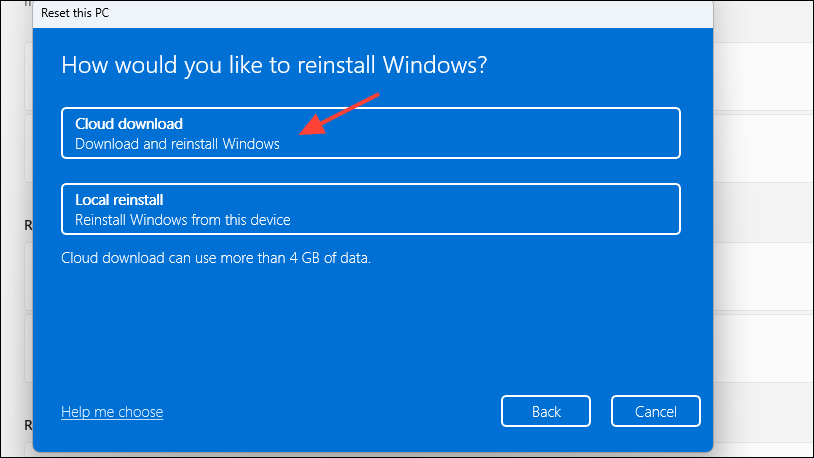
- You will see the options you've selected. If you want to make changes, you can do so now or else click on the 'Next' button.

- It can take time for your PC to reset completely. Once the process is complete, you can check for your Bluetooth device and see whether it is visible now.
Things to know
- Sometimes interference from other connected devices can prevent your Bluetooth adapter from working properly. Try disconnecting other peripherals, especially Bluetooth-enabled ones, and then check for the device.
- Similarly, other household devices and appliances, such as baby monitors, wireless security cameras, cordless telephones, and microwave ovens can interfere with the Bluetooth signal of your device. Move all such devices away from your computer if possible and then check for the device again.
- If Windows Updates are available, try installing them. Updates can fix bugs in the system that may be responsible for the problem.

